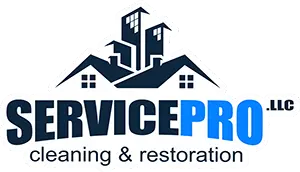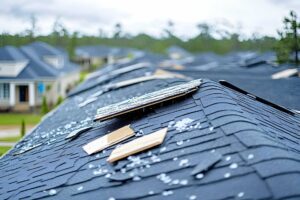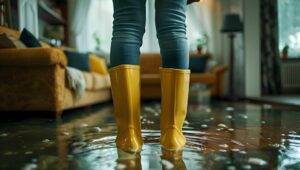When storm damage strikes, swift water removal action is vital to minimize destruction and prevent mold. You need to assess the affected areas carefully, ensuring your safety first. Wearing protective gear, you must turn off the electricity to avoid hazards. Equipped with the right tools, you can begin the water removal process effectively. Understanding the steps involved is important, especially when it comes to maintaining a safe environment and future-proofing your home against similar incidents.
Key Takeaways
- Conduct a thorough damage assessment and ensure safety by wearing protective gear and turning off electricity before beginning water removal.
- Utilize reliable water pumps and extraction vacuums to swiftly remove standing water and moisture from affected areas.
- Prioritize removing furniture and belongings to minimize damage while using submersible pumps for deep water and wet vacuums for smaller puddles.
- Use fans and dehumidifiers to enhance drying and monitor moisture levels to prevent long-term damage and mold growth.
- Regularly inspect and maintain vulnerable areas to prevent future water damage and ensure proper drainage away from the foundation.
Assessing the Damage and Safety Precautions
When you discover water damage, it’s vital to assess the situation carefully before taking any action.
Start with a thorough damage assessment, identifying affected areas and determining the source of the water intrusion. This step is important for preventing further complications.
As you evaluate, don’t forget your safety measures: wear protective gear like gloves and masks, and be cautious of slippery surfaces or electrical hazards.
If the water is contaminated or the damage is extensive, consider evacuating the area and contacting professionals.
Essential Tools and Equipment for Water Removal
Having the right tools and equipment is essential for effective water removal. You’ll need reliable water pumps to swiftly remove large volumes of water, especially if your space has significant flooding.
Choose submersible pumps for deep water and utility pumps for shallower areas. Extraction vacuums are equally critical; they can pull moisture from carpets and other surfaces, preventing mold growth and secondary damage.
When selecting an extraction vacuum, look for one with powerful suction and a significant tank capacity to minimize interruptions during your work.
Remember, having these tools at your disposal speeds up the removal process and offers peace of mind. You’re not alone in this; many have faced similar challenges, and with the right equipment, you can reclaim your space efficiently.
Equip yourself well, and you’ll be better prepared to tackle the aftermath of a storm.
Step-by-Step Water Extraction Process
To effectively extract water from your space, follow this straightforward step-by-step process.
First, ensure your safety by turning off electricity and wearing protective gear.
Next, assess the area to identify the source and extent of the water. Use effective techniques such as submersible pumps for standing water and wet vacuums for smaller puddles. As you work, prioritize removing furniture and belongings to prevent further damage.
Once you’ve extracted the majority of the water, use fans and dehumidifiers to speed up the drying process. This is vital to avoid mold growth.
If you encounter stubborn areas, consider using specialized water extraction tools to ensure thorough removal.
Always remember that this can be an emotionally taxing experience, but taking these steps methodically will help restore your space.
Don’t hesitate to reach out for professional help if it feels overwhelming; you’re not alone in this.
Drying and Dehumidification Techniques
Effective drying and dehumidification are crucial in preventing long-term damage after water extraction. Start by using fans and dehumidifiers to increase air circulation and reduce humidity levels in the affected areas.
Consider utilizing dehumidification methods such as desiccant dehumidifiers, which can absorb moisture from the air more effectively in cooler conditions.
It’s essential to monitor moisture levels with a hygrometer to ensure ideal moisture control. Pay special attention to hidden areas like behind walls and under flooring, as these spots can harbor lingering moisture.
Preventing Future Water Damage and Mold Growth
After addressing any immediate water damage with proper drying and dehumidification techniques, it’s important to implement strategies that prevent future issues.
Start by focusing on moisture control—keep humidity levels below 60% using dehumidifiers and air conditioners. Regularly inspect areas prone to dampness, such as basements and bathrooms, and promptly fix leaks or condensation.
Investing in mold prevention measures, like mold-resistant paints and sealants, can make a significant difference. Verify your home has proper ventilation, especially in high-moisture areas. Use exhaust fans and open windows when cooking or showering to reduce humidity.
Additionally, clean gutters regularly and verify downspouts direct water away from your foundation.
By being proactive, you will protect your home and create a healthier living environment for you and your loved ones.
Review
As you stand at the edge of a flooded domain, remember that each droplet is a potential villain in your home’s story. By swiftly wielding your tools like a knight against an advancing tide, you can reclaim your space. Drying the landscape with fans and dehumidifiers becomes the sun breaking through storm clouds, banishing shadows of mold. Commit to regular inspections as your watchful guardians, ensuring your castle remains fortified against future sieges of water.




